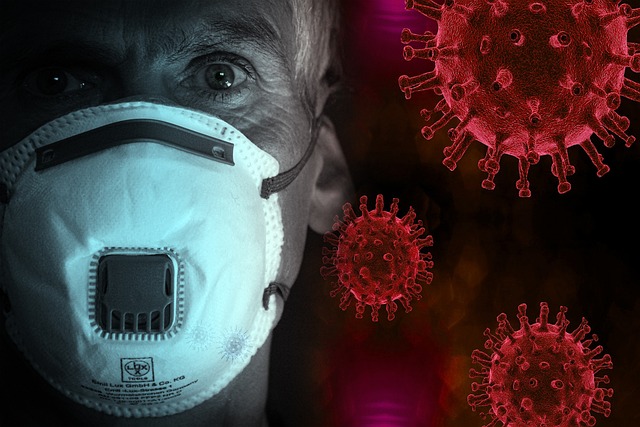Summary Background There is ongoing controversy regarding the possibility of increased respiratory effort leading to patient-self-inflicted lung injury (P-SILI) in spontaneously breathing patients with COVID-19 acute hypoxemic respiratory failure. However, direct clinical evidence relating increased inspiratory effort to lung injury is scarce. We adapted a computational simulator of cardiopulmonary pathophysiology to quantify the mechanical forces that could lead to P-SILI at different levels of respiratory effort. Based on recent data, the simulator parameters were manually adjusted to generate a population of 10 patients that recapitulate the clinical characteristics exhibited by certain COVID-19 patients, i.e. severe hypoxemia combined with relatively well-preserved lung mechanics, being treated. with supplemental oxygen. Results Simulations were performed at tidal volumes (VT) and respiratory rates (RR) of 7 ml/kg and 14 breaths/min (representing normal respiratory effort) and at VT/RR of 7/20, 7/30, 10/14 , 10/20 and 10/30 ml/kg/breaths/min. While oxygenation improved with increased respiratory efforts, significant increases in multiple indicators of the likelihood of lung injury were observed at all highest VT/RR combinations tested. Pleural pressure swing increased from 12.0 ± 0.3 cmH2O at baseline to 33.8 ± 0.4 cmH2O at VT/RR of 7 ml/kg/30 breaths/min and to 46.2 ± 0.5 cmH2O at 10 ml/kg/30 breaths/min. Transpulmonary pressure swing increased from 4.7 ± 0.1 cmH2O at baseline to 17.9 ± 0.3 cmH2O at VT/RR of 7 ml/kg/30 breaths/min and to 24.2 ± 0.3 cmH2O at 10 ml/kg/30 breaths/min. Total lung tension increased from 0.29 ± 0.006 at baseline to 0.65 ± 0.016 at 10 ml/kg/30 breaths/min. Mechanical power increased from 1.6±0.1 J/min at baseline to 12.9±0.2 J/min at VT/RR of 7 ml/kg/30 breaths/min, and to 24.9±0. 3 J/min at 10 ml/kg/30 breaths/min. Driving pressure increased from 7.7 ± 0.2 cmH2O at baseline to 19.6 ± 0.2 cmH2O at VT/RR of 7 ml/kg/30 breaths/min and to 26.9 ± 0.3 cmH2O at 10 ml/kg/30 breaths/min. Conclusions Our results suggest that the forces generated by the increased inspiratory effort commonly observed in COVID-19 acute hypoxemic respiratory failure are comparable to those that have been associated with ventilator-induced lung injury during mechanical ventilation. Respiratory efforts in these patients should be carefully monitored and controlled to minimize the risk of lung injury. |
Comments
The impact of elevated respiratory efforts on the lungs of patients suffering from acute respiratory failure due to COVID-19 has been investigated by researchers at the University of Warwick, who assessed the likelihood of resulting lung injury.
University of Warwick
- Some COVID-19 patients who experience acute respiratory failure respond by significantly increasing their respiratory effort, breathing faster and deeper.
- Some doctors worry that this level of breathing effort could cause more damage to these patients’ lungs.
Working with an international team of leading intensive care doctors, engineering researchers at the University of Warwick have used computational modeling to provide new evidence that elevated respiratory efforts in COVID-19 patients can produce pressures and strains within the lung that can result in injuries.
The impact of elevated respiratory efforts on the lungs of patients suffering from acute respiratory failure due to COVID-19 has been investigated by researchers at the University of Warwick, who assessed the likelihood of resulting lung injury.
Although mechanical ventilation is a life-saving intervention, the potential for mechanical ventilators to further damage already diseased lungs by applying excessive pressures and forces is now well recognized among critical care physicians, who implement specific protocols to minimize the risk. of the so-called fans. induced lung injury.
Since the beginning of the current pandemic, some doctors have argued that similar injuries could occur from increased respiratory effort in spontaneously breathing COVID-19 patients.
So-called patient self-inflicted lung injury is a controversial concept in the critical care community, with some doctors insisting there is no evidence of its existence, while others argue that patients should, if necessary, be placed on mechanical ventilators to avoid it.
There is ongoing debate about the potential for increased respiratory efforts to generate patient self-inflicted lung injury in spontaneously breathing patients with COVID-19 acute hypoxemic respiratory failure, however, direct clinical evidence linking increased Inspiratory effort with lung injury is poor.
In the article, ’High risk of patient self-inflicted lung injury in COVID-19 with frequently encountered spontaneous breathing patterns: a computational modeling study,’ published in the journal Annals of Intensive Care, researchers from the University of Warwick have adapted a cardiopulmonary pathophysiology simulator to quantify the mechanical forces that can lead to a lung injury self-inflicted by the patient, at different levels of respiratory effort.
The simulator was configured to represent a population of 10 patients with COVID-19, treated with supplemental oxygen.
For each of these patients, simulations were tested over a range of tidal volumes (depth of breathing) and respiratory rates, from a tidal volume of 7 ml/kg and a respiratory rate of 14 breaths per minute (representing normal breathing). ), up to a tidal volume of 10 ml/kg and respiratory rate of 30 breaths per minute (representing a high respiratory effort).
The results of the simulations indicated that potentially harmful pressures and strains could be generated at levels of respiratory effort that doctors frequently see in COVID-19 patients.
Professor Declan Bates, from the School of Engineering at the University of Warwick comments:
"Our model has found that patients experiencing COVID-19 acute hypoxemic respiratory failure may be at significant risk of patient-self-inflicted lung injury due to increased respiratory efforts. These efforts should be carefully monitored and controlled during their care."
"Patients should always follow their doctors’ advice regarding the timing of starting oxygen support, non-invasive ventilation, or mechanical ventilation."
















